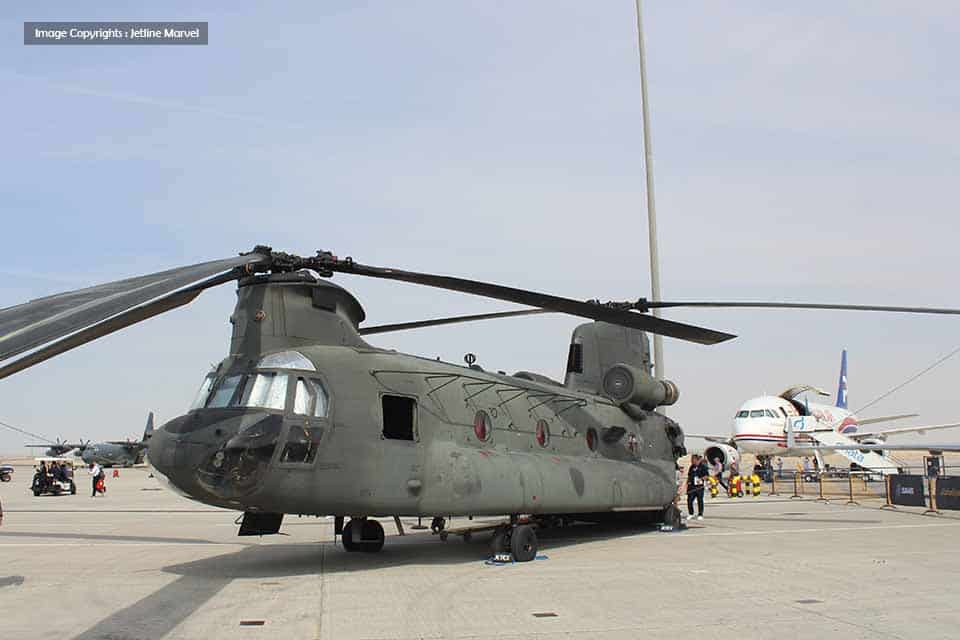Aviation
China Tried ‘Stealing’ CH-47 Chinook Helicopter; Wanted To Land It On Its Aircraft Carrier – Taiwan Media

As per the Taiwan report. states that one of the pilots, was caught stealing, a Chinook helicopter that was manufactured in the US and planned to transport, it to a Chinese aircraft, carrier.
In this daring plan, The pilot is named, Hsieh. was offered, a whopping $15 million. in exchange for carrying out, the operation. during a, scheduled drill. in August he was arrested by Taiwanese authorities putting an end to the plan. The pilot reportedly turned down a first offer of about $6,350 per month but gave in to an even more alluring offer of $15 million total, plus a $1 million down payment. The Chinese also supposedly agreed to Hsieh’s family being evacuated to Thailand.
Today, the Taiwanese High Court Prosecutors Office unveiled an indictment that formally identified Lt. Col. Hsieh as the principal figure involved in the unsuccessful defection attempt. In addition to Hsieh’s involvement, the investigation revealed a larger spy network within the Taiwanese military that was linked to his defection. Since the spring, law enforcement has been keeping a close eye on Hsieh and his network, which has complicated the developing espionage drama.
This incident follows the indictment of a group of active and retired Taiwanese officers on November 27 on charges of spying for Beijing, showcasing an unsettling trend. China, claiming Taiwan as part of its territory, has escalated both military and political pressure in an attempt to force the island to acknowledge its sovereignty—a proposition consistently rejected by the Taipei government.
Over the past decade, court records and reports from Taiwan’s official news agencies reveal that at least 21 active or retired Taiwanese officers, with ranks starting from captain and higher, have been convicted of engaging in espionage activities on behalf of China. These recent cases underscore the multifaceted security challenges faced by Taiwan amid growing geopolitical tensions.
Taiwanese counterintelligence efforts, it seems, are particularly honed in on the military domain, with a significant majority of suspected spies having affiliations with the military or facing accusations of attempting to enlist soldiers into espionage activities. It’s worth noting that the United States, like most countries, does not officially recognize Taiwan as an independent state but remains opposed to any unilateral changes in the cross-strait status through the use of force.
As Taiwan grapples with these espionage challenges, the broader implications of such incidents may further strain the delicate relationship between Taiwan and China, adding another layer of complexity to an already challenging geopolitical landscape in the Asia-Pacific region. The evolving situation calls for heightened vigilance and strategic measures to safeguard national security interests.

Aviation
Boeing, Antonov to Collaborate on Defense Projects

– MOU represents Boeing’s commitment to work with Ukrainian industry
– Includes exploring opportunities for collaborating on in-country support of Unmanned Aerial Systems
A Memorandum of Understanding was signed today by Boeing and Antonov Company to investigate potential collaboration on defense-related projects.
“We’re happy to keep collaborating with the Antonov Company to help Ukraine’s economic development and expansion,” stated Ted Colbert, CEO and president of Boeing Defence, Space, & Security.
Airbus and the Antonov An-225: The Best Partnership:Click here
“This agreement demonstrates our ongoing efforts to find more opportunities to work with Ukrainian industry, which was underscored by our signing of the Ukrainian Defence Industry Compact earlier this year.”
The areas of potential collaboration identified in the agreement consist of training, logistical support and overhaul services for tactical Unmanned Aerial Systems utilized by the Ukrainian Armed Forces, which includes the ScanEagle. In addition, the companies will also explore opportunities for Antonov to provide engineering support to Boeing.
The six largest cargo aircraft ever built in the aviation industry:Click here
“A strong, innovative, and efficient defense industry is key to sustainable economic development and national security, and we are extremely excited to collaborate with Boeing,” said Ievhen Gavrylov, CEO of Antonov Company.
This agreement brings a whole new level of opportunity to implement the latest and most effective solutions – in addition to the possibility of future projects with Boeing in the aerospace and defense industry.”
-

 Travel1 week ago
Travel1 week agoAir India to Expand US Operations with Three New Routes After a Decade
-

 Travel2 weeks ago
Travel2 weeks agoWhy We Should Avoid These Stamps in a Passport
-

 Airlines1 month ago
Airlines1 month agoInvestigations Reveal Fake Chinese Titanium in Boeing and Airbus Jets
-

 Tech4 weeks ago
Tech4 weeks agoChina’s CATL Plans 1,800-Mile Electric Plane Launch by 2027
-

 Airport3 days ago
Airport3 days agoTop 10 Largest Airports in the World by Size
-

 Aerospace4 weeks ago
Aerospace4 weeks agoChina’s Fighter Jets Turn Wings into Autonomous Drones
-

 Airlines4 days ago
Airlines4 days agoAir India Rolls Out A350s for Delhi-New York JFK and Newark Routes
-

 Defence3 weeks ago
Defence3 weeks agoBoeing Enhances Chinook with New Engines and Block II Upgrades at $96 Million







